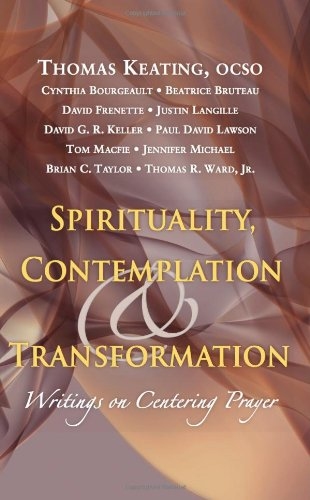"Following is a list of important aspects of the centering prayer practice and their sources in the tradition:
"One. Practice: choosing a place of external solitude. Source: Jesus' exhortation to enter into our inner room, close the door, and pray to our Father in secret (Matt. 6:6).
"I will quote the commentary on that text by Abba Isaac in Chapter Nine of John Cassian's Conferences, a fourth-century treatise about the spiritual practices of the desert fathers and mothers of Egypt, who peopled the deserts south of Alexandria (now Cairo) both as hermits and cenobites (monks and nuns living in communities).
" 'We need to be especially careful to follow the Gospel precept which instructs us to go into our [inner] room and shut the door so that we may pray to our Father. And this is how we can do it.
" 'We pray with the door shut whenever we withdraw our hearts completely from the tumult and noise of our thoughts and our worries and when secretly and intimately we offer our prayers to the Lord.
" 'We pray with the door shut when, without opening our mouths, and in perfect silence, we offer our petitions to the one who pays no attention to words but looks hard at our hearts.
" 'We pray in secret when, in our hearts alone and in our recollected spirits, we address God and reveal our wishes only to him and in such a way that the hostile powers themselves have no inkling of their nature. Hence, we must pray in utter silence to insure that the thrust of our pleading be hidden from our enemies who are especially lying in wait to attack us during our prayer. In this way, we shall fulfill the command of the prophet Micah, "Keep your mouth shut from the one who sleeps on your breast." '
"Two. Practice: gentleness toward unwanted thoughts, feelings, perceptions, and impressions of any kind during prayer. For example, Saint Francis de Sales in Introduction to the Devout Life: 'Act with great patience and gentleness toward ourselves. . . . We must not be annoyed by distractions or our failures but start over without any further ado.
"Three. Practice: returning again and again to the chosen symbol of our consent to God's presence and action within. The symbol may be a word of one or two syllables, an inward turning to God or Jesus as if gazing at someone we greatly love, or noticing our breathing.
"Four. Practice: confidence in God's infinite mercy and unconditional love for us, both in prayer and daily life.
"Five. Practice: self-surrender and abandonment to God's will.
"Six. Practice: the various kinds of thoughts that may occur during prayer.
"Seven. Practice: purification of the unconscious. The dark nights of Saint John of the Cross, especially his teaching on the secret ladder of contemplation. Centering prayer owes much to The Living Flame of Love in which Saint John of the Cross writes that as long as we have not reached our inmost center, there is still progress to be made.
"Eight. Practice: the laying aside of thoughts during centering prayer. 'Thoughts' includes any perception at all, whether bodily, emotional, mental, or spiritual.
"Nine. Practice: disregarding every kind of thought during prayer, even the most devout, as the ravings of a madman.
"Ten. Practice: recognizing and accepting the ascending levels of union with God in contemplative prayer.
"Eleven. Practice: humanness and humor.
"Twelve. Practice: continuous growth in divine union and unity.
"Thirteen. Practice: faith in the divine indwelling of the Most Holy Trinity as the source of centering prayer.
"Fourteen. Practice: the movement of faith and love toward God as the inmost center of our being: awakening to the true self.
"Fifteen. Practice: its unwavering Christ-centered focus, especially participating in Christ's passion, death, descent into hell, and resurrection.
"Sixteen. Practice: the ecclesial dimension: bonding with everyone in the mystical Body of Christ and extending love to the whole human family and to all creation.
"This is only a sampling of major sources, but it may give you a sense that centering prayer is not just one thing. It is rather an effort to provide a blend of the best of the Christian contemplative tradition and at the same time to respond to the needs of our contemporary cultural scene with its particular obstacles and hang-ups to contemplation."
